Insulation
How to pick the best Shed or Garage insulation!
When deciding which shed or garage insulation is right for you there are so many key factors to look out for. Some of the biggest factors we have found are understanding heat transfer, where you are installing your insulation, and looking up the recommended R-Value for the area you wish to insulate. We have taken the time to find these answers for you. Take a look at this video from Mike Sammartano’s Youtube channel that better explains how to understand heat transfer and the three different ways it occurs. This video will explain heat transfer and how heat energy moves and gets from point A to point B. The three different ways heat transferer occurs are conduction, convection, and radiation.
Now that we understand heat transfer it is time to get into some of the other factors to consider when picking your shed or garage insulation material. In this article we are going to assume that we are talking about insulating your shed or garage. While insulating your shed or garage will definitely prove to be very helpful especially with the dreaded Florida summers it is important to note that you will not feel the full cooled effects if you do not plan to add an A/C unit in you structure. However insulating your structure will help to protect the valuables you store in it. Did you know that it is not recommend to store things like photos, paint and glue, clothing, and electronics in a hot environment. This is why picking the proper insulation for you shed can be the difference in maximizing your shed experience. With the proper insulation you shed will be at a much more bearable temperature.

Insulation can be a great upgrade to your shed whether you plan to put up dry wall or not. Insulation doesn’t have to just be for finished sheds. In the heat of Florida an insulated shed would be much nicer than a humid one! When it comes to keeping your shed insulated there are plenty of options but we took the time to select a few so that you could see a side by side comparison. Scroll down to take a peek at the comparison as well as a pros and cons list just a little below that.
How to pick the best Shed or Garage insulation!
When deciding which shed or garage insulation is right for you there are so many key factors to look out for. Some of the biggest factors we have found are understanding heat transfer, where you are installing your insulation, and looking up the recommended R-Value for the area you wish to insulate. We have taken the time to find these answers for you. Take a look at this video from Mike Sammartano’s Youtube channel that better explains how to understand heat transfer and the three different ways it occurs. This video will explain heat transfer and how heat energy moves and gets from point A to point B. The three different ways heat transferer occurs are conduction, convection, and radiation.

Now that we understand heat transfer it is time to get into some of the other factors to consider when picking your shed or garage insulation material. In this article we are going to assume that we are talking about insulating your shed or garage. While insulating your shed or garage will definitely prove to be very helpful especially with the dreaded Florida summers it is important to note that you will not feel the full cooled effects if you do not plan to add an A/C unit in you structure. However insulating your structure will help to protect the valuables you store in it. Did you know that it is not recommend to store things like photos, paint and glue, clothing, and electronics in a hot environment. This is why picking the proper insulation for you shed can be the difference in maximizing your shed experience. With the proper insulation you shed will be at a much more bearable temperature.
Let's compare the three most common insulations to see each benefits.
*Keep in mind that for maximum thermal performance and/or R- Value of insulation is dependent on proper installation.
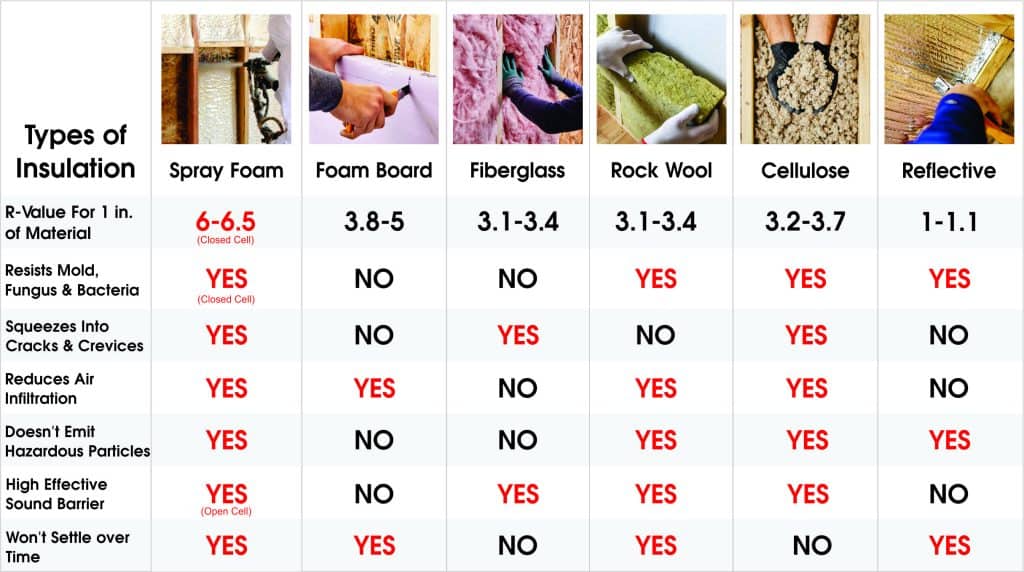
Let's compare the three most common insulations to see each benefits.
*Keep in mind that for maximum thermal performance and/or R- Value of insulation is dependent on proper installation.
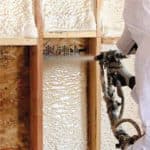
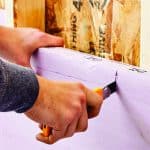
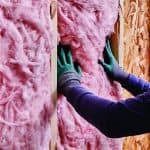

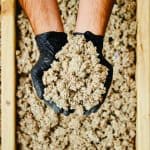
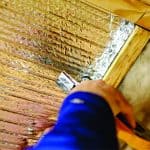
Types of Insulation:
Spray Foam
Foam Board
Fiberglass
Rock Wool
Cellulose
Reflective
R-Value For 1 in. of Material
6-6.5 (Closed Cell)
3.8-5
3.1-3.4
3.1-3.4
3.2-3.7
1-1.1
Resists Mold, Fungus & Bacteria
YES (Closed Cell)
NO
NO
YES
YES
YES
Squeezes Into Cracks & Crevices
YES
NO
YES
NO
YES
NO
Reduces Air Infiltration
YES
YES
NO
YES
YES
NO
Doesn’t Emit Hazardous Particles
YES
NO
NO
YES
YES
YES
High Effective Sound Barrier
YES (Open Cell)
NO
YES
YES
YES
NO
Won’t Settle over Time
Yes
Yes
NO
Yes
NO
Yes
Types of Insulation:
Spray Foam
Foam Board
Fiberglass
Rock Wool
Cellulose
Reflective
R-Value For 1 in. of Material
6-6.5 (Closed Cell)
3.8-5
3.1-3.4
3.1-3.4
3.2-3.7
1-1.1
Resists Mold, Fungus & Bacteria
YES (Closed Cell)
NO
NO
YES
YES
YES
Squeezes Into Cracks & Crevices
YES
NO
YES
NO
YES
NO
Reduces Air Infiltration
YES
YES
NO
YES
YES
NO
Doesn’t Emit Hazardous Particles
YES
NO
NO
YES
YES
YES
High Effective Sound Barrier
YES (Open Cell)
NO
YES
YES
YES
NO
Won’t Settle over Time
Yes
Yes
NO
Yes
NO
Yes
Pro vs. Cons
Pro and Con list can be a super effective way to narrow down options but a very time consuming thing to put together. We took the time to weigh some of the pro vs the cons so you don’t have to! These are a few things you can keep in mid when picking your shed or garage insulation.
Pro and Con list can be a super effective way to narrow down options but a very time consuming thing to put together. We took the time to weigh some of the pro vs the cons so you don’t have to! These are a few things you can keep in mid when picking your shed or garage insulation.
Spray Foam
Pros
*Spray foam insulation provides an airtight seal that is difficult to break
*Spray foam insulation can reduce the utility bills
*Closed Cell Spray foam insulation is impermeable to water, making this a great product to use when picking shed or garage insulation
*Spray foam insulation can deter mold and mildew buildup
*Spray foam insulation offers a longer lifespan compared to other products
*Spray foam insulation is an eco-friendly product
*Spray foam insulation can add strength to your walls and roof
*Spray foam insulation does not lose its R-value over time
*Protects against pest and rodents
Cons
*Spray foam insulation can sometimes shrink
*Spray foam insulation requires a lot of experience to get it right
*Spray foam insulation costs more to install than other options
*Spray Foam Requires a trained professional to be installed, DIY installation is not recommended for this material
Foam Board
Pros
*Foam Board offers a higher R-values compared to loose-fill insulation
*Polyiso board is manufactured with various facings (plastic or aluminum, for example) to further improve its R-value
*Installation requires no special equipment or extraordinary protection for workers
*Mid-priced, between expensive spray foams and low-cost blown and batt styles
Cons
* Foam Board insulation in wall cavities must be tightly fitted to stop air infiltration
*Joints between sheets and boards must be taped to prevent air flow
*The air bubbles inside expanded polystyrene board (EPS or beadboard) stop heat transfer but can accumulate moisture and thus become ineffective
*Extruded polystyrene board (XPS or blueboard) uses HCFCs in its production, which deplete the ozone layer
*Polyisocyanurate board (polyiso) uses the worst HCFCs in its production
*Polyiso suffers from decreasing R-values over time
Fiberglass
Pros
*Easy installation
*The material is noncombustible, or fire resistant
*Some fiberglass insulation uses recycled glass
*Fiberglass insulation is inexpensive
*Insects do not eat fiberglass insulation
Cons
*Protective gear must be worn when installing fiberglass insulation
*Improper insulation reduces efficiency
*Unless you use plastic-sealed batts, fiberglass insulation requires a vapor barrier to protect it from moisture.
*A lower efficiency overall
*Fiberglass blankets do not seal wall and ceiling spaces very tightly
*Inhaled slivers of fiberglass irritate the alveoli and can cause lung disease
*Some fiberglass insulation still uses formaldehyde as a binder
Rock Wool
Pros
*Made from tough and durable raw materials like steel slag and igneous rock
*Rock Wool helps with soundproofing
*It is dense and rigid, making it easier to make precise cuts
*Made from molten rock and steel residue, mineral wool is very tough and durable.
*Rock Wool is naturally moisture-resistant
Cons
*Protective gear must be worn when installing mineral wool insulation: the tiny slivers will lodge in skin and are small enough to be inhaled
*Inhaled slivers of mineral wool irritate the alveoli and can cause lung disease
*The extreme density of Rockwool makes it heavy and unwieldy
*Requires an extensive manufacturing process, which drives up the price
*Rockwool is not biodegradable, which reduces its environmental benefits.
*The nature of mineral wool batts and rolls is that there will always be gaps when it is laid. This means that it is never 100% able to stop airflow and heat loss in your structure
Cellulose
Pros
*Cellulose is treated with boric acid, which increases fire resistance, resists mold and makes it unpalatable to insects
*It is eco-friendly and sustainable
*Blown-in insulation is useful in most application areas
*The health risks from cellulose are far fewer than those from fiberglass
Cons
*Installation costs for cellulose can be higher than for fiberglass
*Cellulose insulation creates an enormous amount of dust when it is installed, so a certified breathing mask is absolutely essential
*Dry-blown cellulose sags and settles, reducing its R-value over time
*Cellulose insulation absorbs moisture easily, which not only reduces long-term efficiency but can cause the insulation to mold and rot. Even wet-blown cellulose can suffer from these effects.
*Both dry- and wet-blown cellulose need a vapor barrier
Reflective
Pros
*Best used in warm climates to reflect heat
*Simple to install
*Does not deteriorate or compress like other inexpensive insulation materials
*Lightweight and not bulky
*Resistant to moisture
Cons
*Cannot be the only insulation in cold climates
*Does not provide any sound barrier effects
* Should be kept clean of dust which may pose some problems
*Not efficient to use in houses or buildings
*Low R-Value Permanence
*It can pose an electrical hazard
* Reflective insulation is a more costly product
Spray Foam
Foam Board
Fiberglass
Pros
*Spray foam insulation provides an airtight seal that is difficult to break
*Spray foam insulation can reduce the utility bills
*Closed Cell Spray foam insulation is impermeable to water
*Spray foam insulation can deter mold and mildew buildup
*Spray foam insulation offers a longer lifespan compared to other products
*Spray foam insulation is an eco-friendly product
*Spray foam insulation can add strength to your walls and roof
*Spray foam insulation does not lose its R-value over time
*Protects against pest and rodents
Cons
*Spray foam insulation can sometimes shrink
*Spray foam insulation requires a lot of experience to get it right
*Spray foam insulation costs more to install than other options
*Spray Foam Requires a trained professional to be installed, DIY installation is not recommended for this material
Pros
*Foam Board offers a higher R-values compared to loose-fill insulation
*Polyiso board is manufactured with various facings (plastic or aluminum, for example) to further improve its R-value
*Installation requires no special equipment or extraordinary protection for workers
*Mid-priced, between expensive spray foams and low-cost blown and batt styles
Cons
* Foam Board insulation in wall cavities must be tightly fitted to stop air infiltration
*Joints between sheets and boards must be taped to prevent air flow
*The air bubbles inside expanded polystyrene board (EPS or beadboard) stop heat transfer but can accumulate moisture and thus become ineffective
*Extruded polystyrene board (XPS or blueboard) uses HCFCs in its production, which deplete the ozone layer
*Polyisocyanurate board (polyiso) uses the worst HCFCs in its production
*Polyiso suffers from decreasing R-values over time
Pros
*Easy installation
*The material is noncombustible, or fire resistant
*Some fiberglass insulation uses recycled glass
*Fiberglass insulation is inexpensive
*Insects do not eat fiberglass insulation
Cons
*Protective gear must be worn when installing fiberglass insulation
*Improper insulation reduces efficiency
*Unless you use plastic-sealed batts, fiberglass insulation requires a vapor barrier to protect it from moisture.
*A lower efficiency overall
*Fiberglass blankets do not seal wall and ceiling spaces very tightly
*Inhaled slivers of fiberglass irritate the alveoli and can cause lung disease
*Some fiberglass insulation still uses formaldehyde as a binder
Rock Wool
Cellulose
Reflective
Pros
*Made from tough and durable raw materials like steel slag and igneous rock
*Rock Wool helps with soundproofing
*It is dense and rigid, making it easier to make precise cuts
*Made from molten rock and steel residue, mineral wool is very tough and durable.
*Rock Wool is naturally moisture-resistant
Cons
*Protective gear must be worn when installing mineral wool insulation: the tiny slivers will lodge in skin and are small enough to be inhaled
*Inhaled slivers of mineral wool irritate the alveoli and can cause lung disease
*The extreme density of Rockwool makes it heavy and unwieldy
*Requires an extensive manufacturing process, which drives up the price
*Rockwool is not biodegradable, which reduces its environmental benefits.
*The nature of mineral wool batts and rolls is that there will always be gaps when it is laid. This means that it is never 100% able to stop airflow and heat loss in your structure
Pros
*Cellulose is treated with boric acid, which increases fire resistance, resists mold and makes it unpalatable to insects
*It is eco-friendly and sustainable
*Blown-in insulation is useful in most application areas
*The health risks from cellulose are far fewer than those from fiberglass
Cons
*Installation costs for cellulose can be higher than for fiberglass
*Cellulose insulation creates an enormous amount of dust when it is installed, so a certified breathing mask is absolutely essential
*Dry-blown cellulose sags and settles, reducing its R-value over time
*Cellulose insulation absorbs moisture easily, which not only reduces long-term efficiency but can cause the insulation to mold and rot. Even wet-blown cellulose can suffer from these effects.
*Both dry- and wet-blown cellulose need a vapor barrier
Pros
*Best used in warm climates to reflect heat
*Simple to install
*Does not deteriorate or compress like other inexpensive insulation materials
*Lightweight and not bulky
*Resistant to moisture
Cons
*Cannot be the only insulation in cold climates
*Does not provide any sound barrier effects
* Should be kept clean of dust which may pose some problems
*Not efficient to use in houses or buildings
*Low R-Value Permanence
*It can pose an electrical hazard
* Reflective insulation is a more costly product
Providing Wood Sheds, Metal Sheds, Dog Kennels, Gazebos, and Greenhouses in Florida, including: Alachua, Alachua County, Alafaya, Alford, Altamonte Springs, Altha, Altoona, Andrews, Anna Maria, Anthony, Apalachicola, Apopka, Arcadia, Archer, Astatula, Astor, Atlantic Beach, Atlantis, Auburndale, Aventura, Avon Park, Baker County, Bal Harbour, Baldwin, Bartow, Bascom, Bay County, Bay Harbor Islands, Bay Hill, Bay Lake, Bayonet Point, Beacon Square, Bell, Belle Glade, Belle Isle, Belleair, Belleair Beach, Belleair Bluffs, Belleair Shores, Belleview, Beverly Beach, Beverly Hills, Biscayne Park, Bithlo, Blountstown, Boca Raton, Bonifay, Bonita Springs, Bowling Green, Boynot Beach, Bradenton, Bradenton Beach, Bradford County, Brandon, Branford, Brevard County, Briny Breezes, Bristol, Bronson, Brooker, Brookridge, Brooksville, Broward County, Buena Ventura Lakes, Bushnell, Calhoun County, Callahan, Callaway, Campbell, Campbellton, Cape Canaveral, Cape Coral, Carrabelle, Carrollwood, Crayville, Casselberry, Cedar Key, Celebration, Center Hill, Century, Charlotte County, Chattahoochee, Chiefland, Chipley, Christmas, Cinco Bayou, Citra, Citrus County, Citrus Hills, Citrus Park, Citrus Springs, Clay County, Clearwater, Clermont, Clewiston, Cloud Lake, Cocoa, Cocoa beach, Coconut Creek, Coleman, Collier County, Columbia County, Cooper city, Coral Gables, Coral Springs, Cottondale, Crescent City, Crestview, Cross City, Crystal River, Crystal Springs, Cutler Bay, Dade City, Dade City North, Dania Beach, Davenport, Davie, Daytona, Daytona Beach, Daytona Beach Shores, DeBary, Deerfield Beach, Defuniak Springs, Deland, Delray Beach, Deltona, DeSoto County, Destin, Dixie County, Doral, Dundee, Dunedin, Dunnellon, Duval County, Eagle Lake, East Bronson, East Williston, Eatonville, Ebro, Edgewater, Edgewood, El Portal, Elfers, Escambia County, Estero, Esto, Eustis, Everglades City, Fairview Shores, Fanning Springs, Fellsmere, Fernandina Beach, Ferndale, Flagler, Flagler County, Floral City, Florida City, Fort Lauderdale, Fort McCoy, Fort Meade, Fort Myers, Fort Myers Beach, Fort Pierce, Fort Walton Beach, Fort White, Franklin County, Freeport, Frostproof, Fruitland Park, Gadsen County, Gainesville, Garden Grove, Gilchrist County, Glades County, Glen Ridge, Glet St. Mary, Golden Beach, Golf, Gotha, Graceville, Grand Island, Grand Ridge, Grant-Valkaria, Green Cove Springs, Greenacres, Greensboro, Greenville, Greenwood, Gretna, Groveland, Gulf Breeze, Gulf Country, Gulf Stream, Gulfport, Haines City, Hallandale Beach, Hamilton County, Hampton, Hardee County, Havana, Haverhill, Hawthorne, Hendry County, Hernando, Hernando Beach, Hernando County, Hialeah, Hialeah Gardens, High Point, High Springs, Highland Beach, Highland Park, Highlands County, Hill n Dale, Hillcrest Heights, Hilliard, Hillsboro Beach, Hillsborough County, Holden Heights, Holiday, Holly Hill, Hollywood, Holmes Beach, Holmes County, Homestead, Homosassa Springs, Horseshoe Beach, Howey In The Hills, Hudson, Hunters Creek, Hypoluxo, Indialantic, Indian Creek, Harbour Beach, Indian River County, Indian River Shores, Indian Rocks Beach, Indian Shores, Indiantown, Inglis, Interlachen, Inverness, Islamorada, Istachatta, Jackson County, Jacksonville, Jacksonville Beach, Jacob City, Jasmine Estates, Jasper, Jay, Jefferson City, Jennings, Juno Beach, Jupiter, Jupiter Inlet Colony, Jupiter island, Kathleen, Kenneth City, Key Biscayne, Key Colony Beach, Key West, Keystone, Keystone Heights, Kissimmee, LaBelle, Lacoochee, LaCrosse, Lady Lake, Lafayette County, Lake Alfred, Lake Buena Vista, Lake Butler, Lake City, Lake Clarke Shore, Lake County, Lake Hamilton, Lake Hart, Lake Helen, Lake Kathryn, Lake Mack Forest Hills, Lake Magdalene, Lake Mary, Lake Mary Jane, Lake Panasoffkee, Lake Park, Lake Placid, Lake Wales, Lake Worth Beach, Lakeland, Land O Lakes, Lantana, Lauderdale Lakes, Lauderdale By The Sea, Lauderhill, Laurel Hill, Lawtey, Layton, Lazy Lake, Lee, Lee County, Leesburg, Leon County, Levy County, Liberty County, Lighthouse Point, Lisbon, Live Oak, Lockhart, Longboat Key, Longwood, Loxahatchee Groves, Lutz, Lynn Haven, Macclenny, Madeira Beach, Madison, Madison County, Maitland, Malabar, Malone, Manalapan, Manatee County, Manatee Road, Mangonia Park, Marathon, Marco Island, Margate, Maianna, Marineland, Marion County, Marion Oaks, Martin County, Mary Esther, Masaryktown, Mascotte, Mayo, McIntosh, Meadow Woods, Medley, Melbourne Beach, Melbourne Village, Mexico Beach, Miami, Miami Beach, Miami Gardens, Miami Lakes, Miami Shores, Miami Springs, Miami-Dade County, Micanopy, Middleburg, Midway, Milton, Minneola, Miramar, Monroe County, Monticello, Montverde, Moore Haven, Morriston, Mount Dora, Mount Plymouth, Mulberry, Naples, Nassau County, Neptune Beach, New Port Richey, New port Richey East, New Smyna Beach, Newberry, Niceville, Noma, North Bay Village, North Lauderdale, North Miami, North Miami Beach, North Palm Beach, North Port, North Redington Beach, Northdale, Oak Hill, Oak Ridge, Oakland, Oakland Park, Ocala, Ocean Breeze, Ocean Ridge, Ocklawaha, Ocoee, Odessa, Okahumpka, Okaloosa County, Okeechobee, Okeechobee County, Old Town, Oldsmar, Opa-Locka, Orange City, Orange County, Orange Park, Orchid, Orlando, Orlovista, Ormond Beach, Osceola County, Otter Creek, Oviedo, Pahokee, Paisley, Palatka, Palm Bay, Palm Beach, Palm Beach County, Palm Beach Gardens, Palm Beach Shores, Palm Coast, Palm Shores, Palm Springs, Palmetto, Palmetto Bay, Panama City, Panama City Beach, Paradise Heights, Parker, Parkland, Pasadena Hills, Pasco County, Paxton, Pembroke Park, Pembroke Pines, Penney Farms, Pensacola, Perry, Pierson, Pine Castle, Pine Hills, Pine Lakes, Pine Ridge, Pinecrest, Pinellas County, Pinellas Park, Pittman, Plant City, Plantation, Poinciana, Polk City, Polk County, Pomona Park, Pompano Beach, Ponce De Leon, Ponce Inlet, Port Orange, Port Richey, Port St. Joe, Port St. Lucie, Punta Gorda, Putnam County, Quincy, Raiford, Rainbow Lakes Estates, Rainbow Springs, Reddick, Redington Beach, Redington Shores, Ridge Manor, River Ridge, Riverview, Riviera Beach, Rockledge, Royal Palm Beach, Safety Harbor, Saint Leo, Salt Springs, San Antonio, Sanford, Sanibel, Santa Rosa County, Sarasota, Sarasota County, Satellite Beach, Sea Ranch Lakes, Sebastian, Sebring, Seminole, Seminole County, Sewalls Point, Shalimar, Silver Lakes, Silver Springs Shores, Sky Lake, Sneads, Sopchoppy, Sorrento, South Bay, South Daytona, South Miami, South Palm Beach, South Pasadena, Southchase, Southwest Ranches, Sparr, Spring Lake, Springfield, St Cloud, St. Augustine, St. Augustine Beach, St. Johns County, St. Leo, St. Lucie County, St. Lucie Villiage, St. Marks, St Pete Beach, St. Petersburg, Starke, Stuart, Sugarmill Woods, Summerfield, Sumter County, Sunny Isles Beach, Sunrise, Surfside, Suwannee County, Sweetwater, Taft, Tallahassee, Tamarac, Tampa, Tangelo, Tangerine, Tarpon Springs, Tavares, Taylor County, Temple Terrace, Tequesta, The Villages, Thonotosassa, Tildenville, Timber Pines, Titusville, Town n Counrty, Treasure Island, Trenton, Trilby, Trinity, Umatilla, Union County, Union Park, Valparaiso, Valrico, Venice, Vernon, Vero Beach, Virginia Gardens, Volusia County, Wakulla County, Waldo, Walton County, Washington County, Wauchula, Wausau, Webster, WedgeField, Weeki Wachee, Weirsdale, Welaka, Wellington, Wesley Chapel, West Melbourne, West Miami, West Palm Beach, West Park, Westlake, Weston, Westville, Wewahitchka, White Springs, Wildwood, Williamsburg, Williston, Williston Highlands, Wilton Manors, Windermere, Winter Garden, Winter Haven, Winter Park, Winter Springs, Worthington Springs, Yalaha, Yankeetown, Yeehaw Junction, Zellwood, Zephyrhills, Zephyrhills East, Zephyrhills North, Zephyrhills West, and Zolfo Springs.
